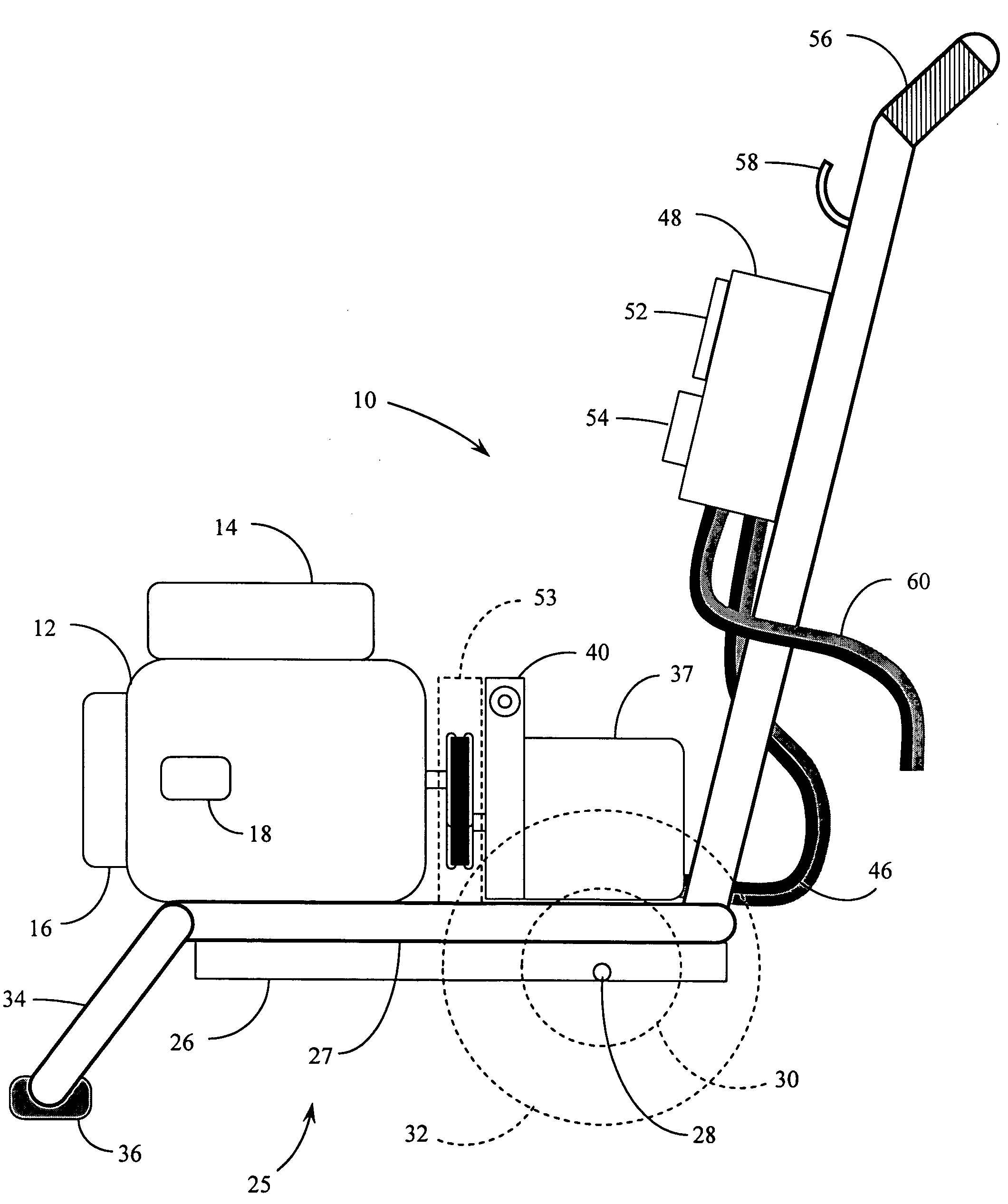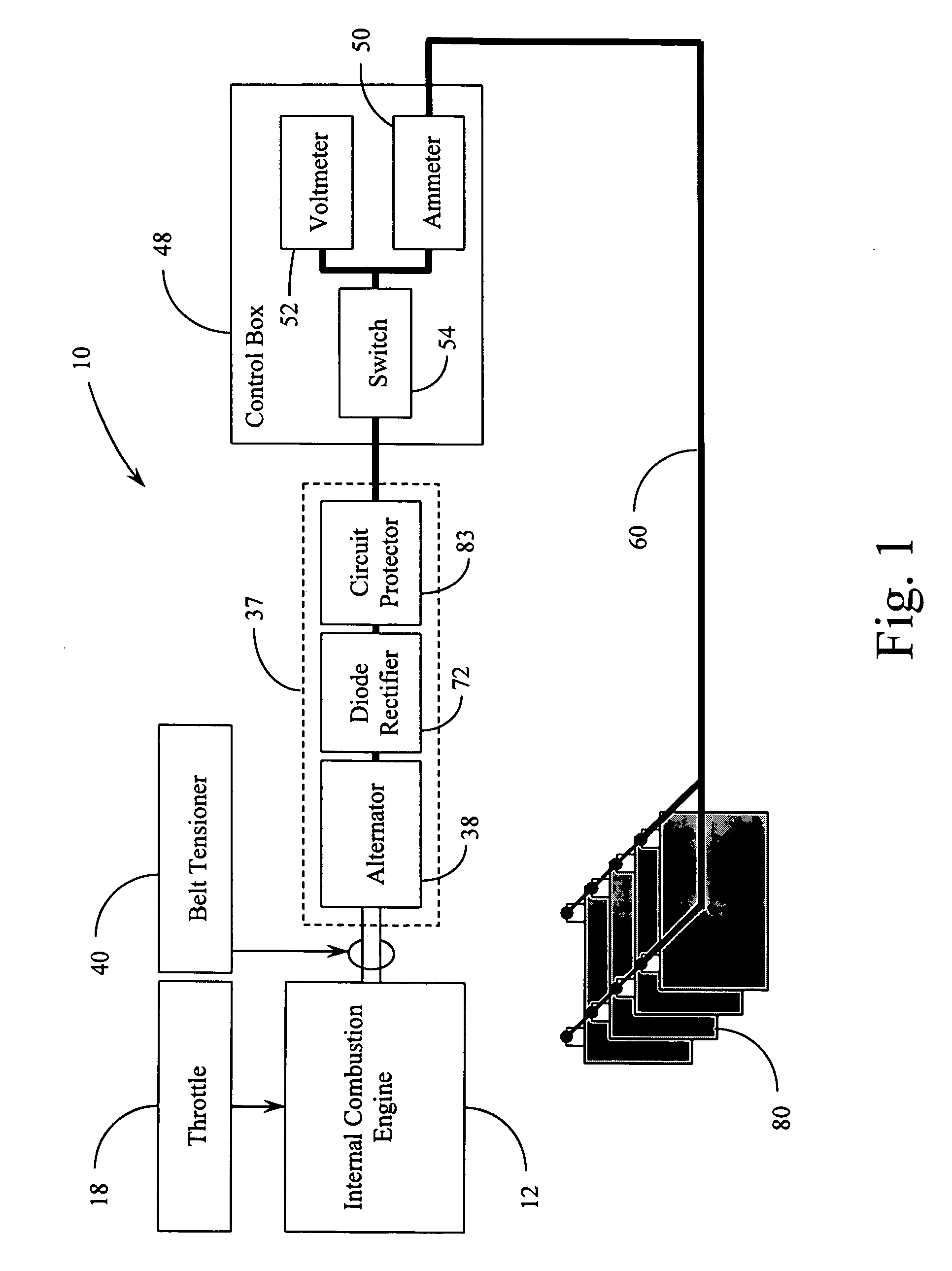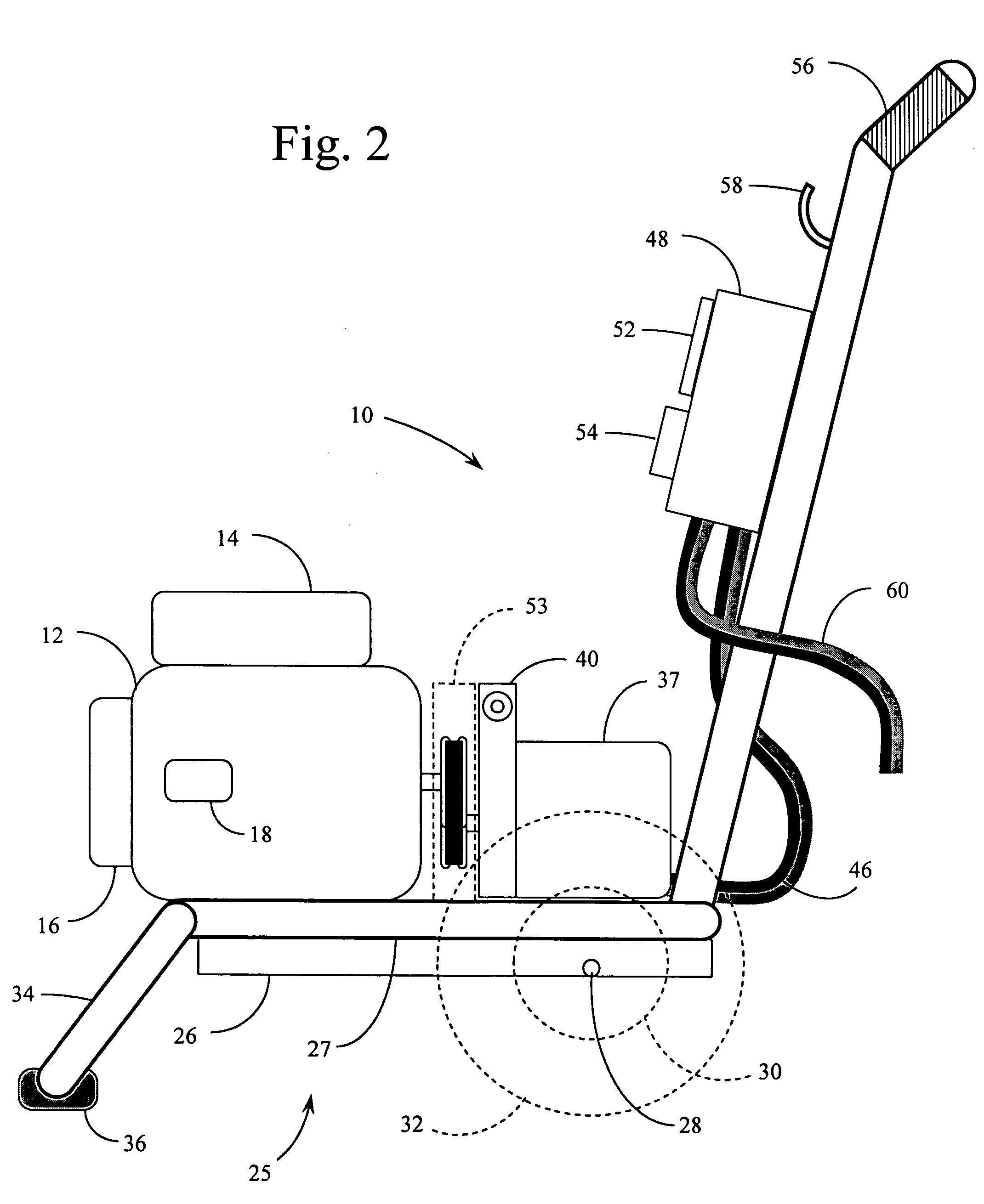Portable battery charger powered by internal combustion engine
- Summary
- Abstract
- Description
- Claims
- Application Information
AI Technical Summary
Benefits of technology
Problems solved by technology
Method used
Image
Examples
Embodiment Construction
[0014]Reference is first made to FIG. 1, which provides a simple block diagram of the overall structure and function of the battery charging system of the present invention. As shown in FIG. 1, the battery charging process begins with the operation of internal combustion engine 12, being regulated by engine throttle 18 which can be adjusted manually to control the number of RPM's (and therefore the power) that the engine puts out. The power output of the engine 12 is used to turn alternator 38 within the generator system 37, the rotation being transferred to the alternator 38 through the engine's output driveshaft through a V-belt and pulley arrangement described in more detail below. The engine drive pulley is connected to a pulley on the input driveshaft of the alternator 38 with a standard V-belt through a belt tensioner 40, which is used to tighten or loosen the V-belt. The belt tensioner 40 supplements the function of the engine throttle 18 wherein the tightness of the V-belt h...
PUM
 Login to View More
Login to View More Abstract
Description
Claims
Application Information
 Login to View More
Login to View More - R&D
- Intellectual Property
- Life Sciences
- Materials
- Tech Scout
- Unparalleled Data Quality
- Higher Quality Content
- 60% Fewer Hallucinations
Browse by: Latest US Patents, China's latest patents, Technical Efficacy Thesaurus, Application Domain, Technology Topic, Popular Technical Reports.
© 2025 PatSnap. All rights reserved.Legal|Privacy policy|Modern Slavery Act Transparency Statement|Sitemap|About US| Contact US: help@patsnap.com



